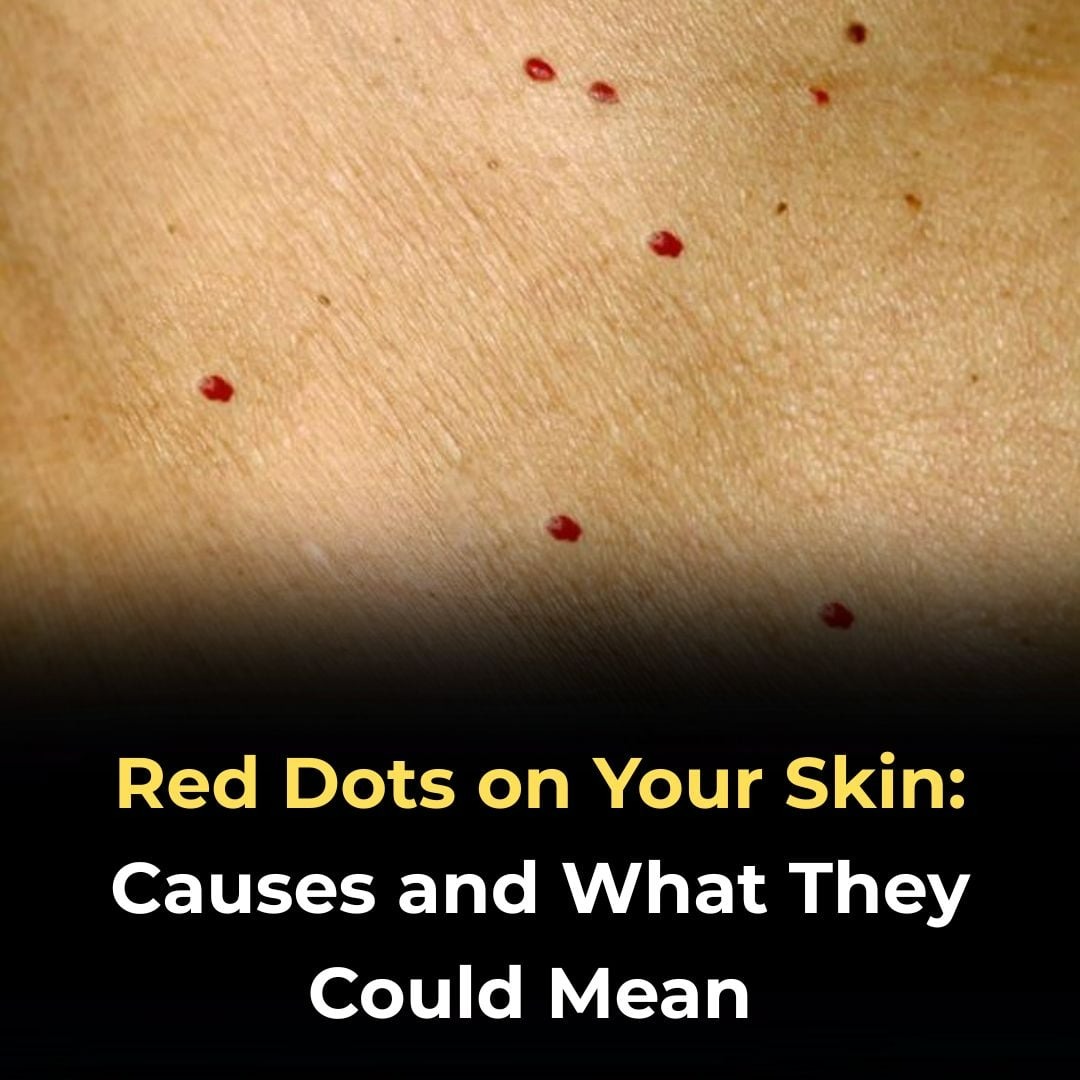Causes:
Straining (coughing, vomiting)
Injury or pressure
Low platelet count
Infections (like strep or viral illnesses)
🚨 See a doctor if widespread or with fever/bruising
3. Heat Rash (Miliaria)
What it is: Tiny red bumps from blocked sweat glands
Common in: Hot, humid weather or after sweating
✅ Goes away on its own with cooling and dry skin
4. Allergic Reaction or Hives
What it is: Raised, red, itchy spots
Triggers: Foods, medications, insect bites, chemicals
✅ Usually temporary — antihistamines help
5. Insect Bites (Mosquitoes, Fleas, Bed Bugs)
What it is: Red, itchy bumps, often in clusters
Clue: Appear after outdoor activity or new bedding
✅ Treat with anti-itch creams and avoid scratching
6. Folliculitis
What it is: Inflammation of hair follicles
Looks like: Red pimples around hair shafts
Causes: Shaving, tight clothing, bacteria
✅ Keep skin clean and dry — avoid tight fabrics
7. Keratosis Pilaris (“Chicken Skin”)
What it is: Rough, red or flesh-colored bumps on arms, thighs
Cause: Buildup of keratin blocking hair follicles
✅ Common, harmless — improves with moisturizers
8. Spider Angiomas
What it is: Red center with thin “legs” like a spider
Cause: Dilated blood vessels — linked to sun exposure, hormones, or liver disease
🚨 See a doctor if multiple or in children without cause
9. Viral Infections (e.g., Measles, Hand-Foot-Mouth Disease)
What it is: Red rash with fever, sore throat, or other symptoms
❗ Requires medical diagnosis — especially in children
10. Autoimmune Conditions (e.g., Lupus, Vasculitis)
What it is: Red dots or rashes due to immune system attacking blood vessels
Other signs: Joint pain, fatigue, sun sensitivity
🩺 Needs medical evaluation
11. Medication Side Effects
Some drugs (like steroids, blood thinners, or certain antibiotics) can cause:
Petechiae
Rashes
Increased redness or bruising
📋 Always review side effects with your doctor
🚫 When to See a Doctor
While most red dots are not dangerous, see a healthcare provider if you have:
Widespread red dots with no clear cause
Fever, fatigue, or bruising
Bleeding gums or nosebleeds
Spots that grow, bleed, or change color
Red dots in a child with fever or illness
🩺 A dermatologist or primary care doctor can diagnose the cause with a physical exam — sometimes blood tests.
✅ What You Can Do at Home
Don’t scratch
Prevents infection and scarring
Moisturize daily
Soothes dry, irritated skin
Avoid harsh soaps
Prevents further irritation
Track changes
Take photos to show your doctor
Protect from sun
UV rays can worsen some conditions
Final Thoughts
Finding red dots on your skin can be unsettling — but in most cases, they’re nothing to worry about.
From cherry angiomas to insect bites, the causes are often harmless and common.
